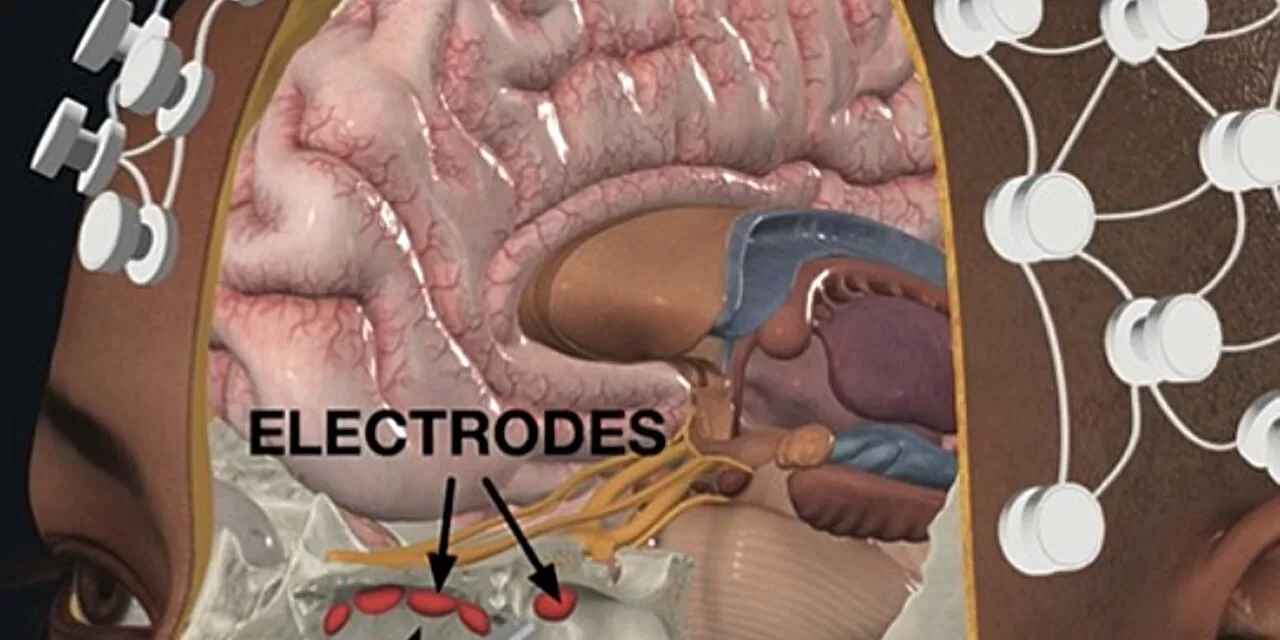Researchers at Carnegie Mellon University and Allegheny Health Network have introduced a revolutionary technique called “DeepFocus,” which offers a minimally invasive approach to deep brain stimulation (DBS). Utilizing transcranial electrical stimulation (TES) on the scalp and transnasal electrical stimulation (TnES), this novel method enhances precision in targeting deep brain structures, promising significant advancements in the treatment of neuropsychiatric disorders.
A Novel Approach to Deep Brain Stimulation
Unlike traditional DBS, which requires invasive surgical implantation of electrodes, DeepFocus leverages the thin bones between the nasal cavity and the brain to transmit electrical currents more accurately and efficiently. “By going through the nose, we can place electrodes as close to the brain as possible without opening the skull,” explained Mats Forssell, an electrical and computer engineering research scientist and lead author of the study published in the Journal of Neural Engineering.
This method provides access to hard-to-reach brain structures, including the orbitofrontal cortex and Brodmann area 25, which are crucial in conditions such as depression, PTSD, OCD, addiction, and substance use disorders. By disrupting the brain’s reward circuits, DeepFocus could offer both short- and long-term therapeutic benefits.
Potential for Clinical Impact
DeepFocus presents a lower-risk alternative to conventional DBS, which involves complex neurosurgery and carries risks such as intracranial hemorrhage and infection. It also surpasses noninvasive methods like transcranial magnetic stimulation (TMS) and transcranial focused ultrasound stimulation (tFUS) by offering better depth penetration and steerability.
“The innovation from the team provides exciting advances in the delivery of energy in terms of both safety and efficacy,” said Boyle Cheng, a professor of neurosurgery at Allegheny Health Network’s Neuroscience Institute. “Ultimately, the potential for better clinical treatments with fewer complications is highly motivating.”
Dr. Alexander Whiting, a neurosurgeon and the director of epilepsy surgery at AHN’s Neuroscience Institute, emphasized the transformative potential of DeepFocus. “This new tool could be a game changer, offering the ability to treat deep areas of the brain in mental health disorders like depression, OCD, and addiction in a minimally invasive way that does not involve traditional incisions or permanent placement of implanted hardware.”
Simulation and Optimization with DeepROAST
Accompanying the DeepFocus technique is a computational platform called DeepROAST, designed to optimize the placement of electrodes and the application of electrical currents. By simulating how electric fields interact with the skull and nasal structures, DeepROAST refines treatment parameters for enhanced efficiency and safety.
“With the DeepROAST platform, we can simulate how the electric field travels inside the brain realistically,” explained Yuxin Guo, a Ph.D. student at Carnegie Mellon University. “This ensures precise targeting of deep brain regions, which could lead to more effective interventions for neurological disorders.”
Addressing the Mental Health Crisis
The U.S. is facing a severe mental health crisis, with PTSD, depression, and substance use disorders affecting millions. Traditional DBS shows promise but remains limited by surgical complexity and regulatory challenges. “Our minimally invasive, low-risk approach, which can be implemented in an outpatient setting, presents a scalable and widely applicable solution,” said senior author Pulkit Grover, a professor at Carnegie Mellon University.
Conclusion
DeepFocus represents a significant advancement in neuromodulation technology, potentially revolutionizing the treatment of neuropsychiatric conditions. By combining efficacy with minimal invasiveness, it could pave the way for broader clinical adoption and improved patient outcomes.
Disclaimer: The research on DeepFocus is still in its early stages, and further studies are needed to establish its safety, efficacy, and regulatory approval. Individuals seeking treatment should consult medical professionals before considering any new therapeutic approach.












